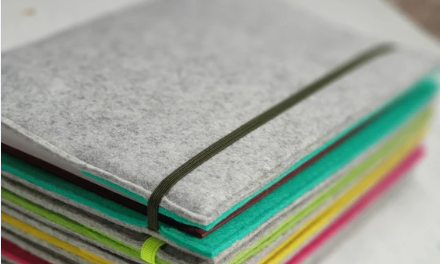Recycled Notebooks vs. Regular Notebooks: What’s the Difference and Why It Matters
- Lion Paper Team

- Jun 28
- 3 min read
Quick Content Reach:
When sourcing notebooks, one critical decision buyers face is choosing between recycled paper and regular (virgin) paper. Though they serve the same function, the differences in environmental impact, production process, cost, and end-user experience can significantly influence your brand’s sustainability goals and sourcing strategy.
In this article, I’ll walk you through the key distinctions and help you understand why this decision matters for your brand’s future.
1. Production Process & Environmental Impact
Regular (Virgin) Paper Notebooks
Made from: Fresh wood pulp derived from newly harvested trees.
Process: Logging → Pulping → Bleaching → Sheet Formation → Drying → Cutting
Environmental Impact:
High water and energy consumption
Leads to deforestation and biodiversity loss
Greater greenhouse gas emissions
Recycled Paper Notebooks
Made from: Post-consumer waste—office paper, newspapers, cardboard, etc.
Process: Collection → Sorting → De-inking → Pulping → Sheet Formation → Cutting
Environmental Impact:
Saves trees and water
Reduces landfill space
Requires less energy in pulping
Recycling 1 ton of paper = saves 17 trees + 7,000 gallons of water + 3.3 cubic yards of landfill

2. Quality, Look & Durability
Regular Paper
Brighter white appearance
Smoother texture
Higher opacity and strength due to longer fibers
Recycled Paper
Slightly off-white or gray hue
May contain small visible fibers or specks
Slightly softer texture; lower opacity
Note: Modern recycled paper can now match regular paper in print quality and durability.
3. Cost Considerations
Regular Paper:
More cost-effective due to mature and efficient production lines
Stable pricing due to high global supply
Recycled Paper:
Higher upfront cost due to sorting, de-inking, and processing steps
Lower long-term environmental and CSR-related costs
4. Why Your Choice Matters
Environmental Responsibility: Choosing recycled paper reflects your brand’s commitment to sustainability.
Compliance: Many U.S. and EU buyers now favor or mandate FSC-certified or recycled content.
Consumer Trust: Eco-conscious consumers are more likely to support sustainable brands.
Corporate Image: Demonstrates alignment with ESG goals, enhances supplier qualification.
Final Thought
While regular paper notebooks may still dominate due to their affordability, the rise in demand for sustainable options is undeniable. As recycled paper quality improves and environmental regulations tighten, brands that act early will stand out in a competitive market.
At Lion Paper Products, we offer both recycled and regular notebooks—customizable to your brand’s needs. Whether you're sourcing for retail, government, or e-commerce, we’ll help you make the right choice.
Let’s build a greener future, one notebook at a time.
📩 Contact us now to explore sustainable options.
FAQs:
Q1: What is recycled paper made from?
A: Recycled paper is made from post-consumer waste like newspapers, used office paper, and cardboard.
Q2: Is recycled paper good quality for notebooks?
A: Yes. Today’s recycled paper is refined and performs well in writing and printing.
Q3: Is recycled paper more expensive?
A: Initially yes, but it offers long-term environmental and CSR value.
Q4: Can recycled paper match the appearance of regular paper?
A: Almost. Modern recycled paper is very close in whiteness and smoothness.
Q5: Why should brands choose recycled paper notebooks?
A: To align with sustainability goals and meet client expectations.
Q6: Can I customize cover and inside pages for recycled notebooks?
A: Absolutely. We support full customization.
Are you looking for a reliable manufacturer? Reach out to Lion Paper for a free quote and consultation. Let’s collaborate on creating custom writing paper products that will set your brand apart from the competition.







Comments